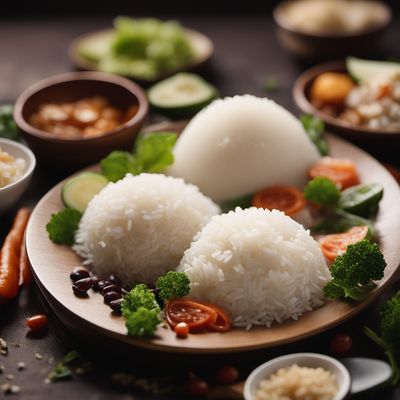
Ingredient
Pasta based dishes, uncooked
Unleashing the Potential of Raw Pasta: A Culinary Adventure
Raw pasta, typically made from durum wheat semolina and water, is characterized by its firm texture and pale yellow color. It comes in various shapes and sizes, such as spaghetti, penne, or fusilli, each with its own unique charm. When cooked, it transforms into a tender, chewy delight, but in its uncooked state, it offers a satisfying crunch and a starchy flavor that adds depth to dishes.
Origins and history
Pasta, originating from Italy, has a rich history dating back thousands of years. It is believed to have been introduced by the Etruscans, an ancient civilization in Italy, and later refined by the Romans. Over time, pasta became a staple in Italian cuisine and eventually spread to other parts of the world, gaining popularity and diverse variations.
Nutritional information
Raw pasta is a good source of carbohydrates, providing energy for the body. It also contains small amounts of protein and fiber. A 2-ounce (56g) serving of uncooked pasta typically contains around 200 calories.
Allergens
Raw pasta made from wheat may contain gluten, making it unsuitable for individuals with gluten intolerance or celiac disease.
How to select
When selecting raw pasta, look for packages that are tightly sealed and free from any signs of moisture or damage. Opt for reputable brands known for their quality. Additionally, check the expiration date to ensure freshness.
Storage recommendations
To maintain the freshness and quality of raw pasta, store it in a cool, dry place, away from direct sunlight. It is best to keep it in its original packaging or transfer it to an airtight container to prevent moisture absorption.
How to produce
While producing raw pasta from scratch requires specialized equipment and expertise, amateur cooks can experiment with making fresh pasta using a pasta machine or by hand using a rolling pin. There are numerous recipes and tutorials available online to guide the process.
Preparation tips
Raw pasta can be used in various creative ways. It can be added to salads for an interesting texture, used as a crunchy topping for soups or casseroles, or even incorporated into homemade granola bars for a unique twist. To enhance its flavor, lightly toast the raw pasta in a dry pan before using it in recipes.
Culinary uses
Raw pasta is commonly used as a garnish or crunchy element in salads, soups, and casseroles. It can also be ground into a coarse powder and used as a coating for fried foods, adding a delightful crunch.
Availability
Raw pasta is widely available in grocery stores, supermarkets, and specialty food stores worldwide.



